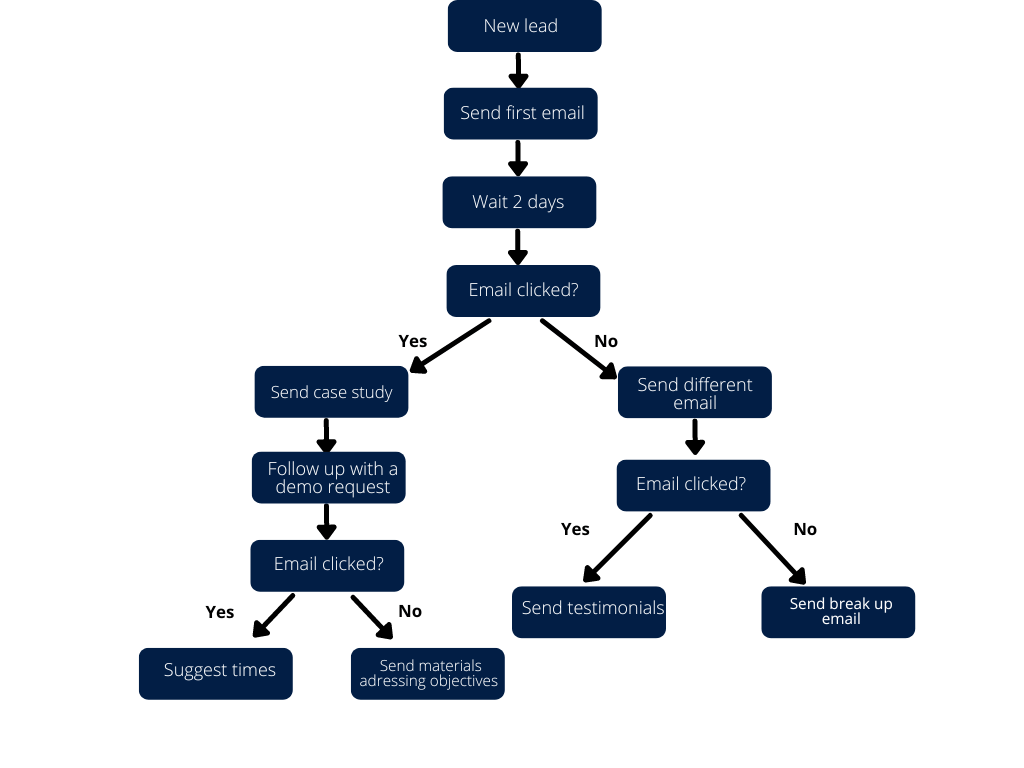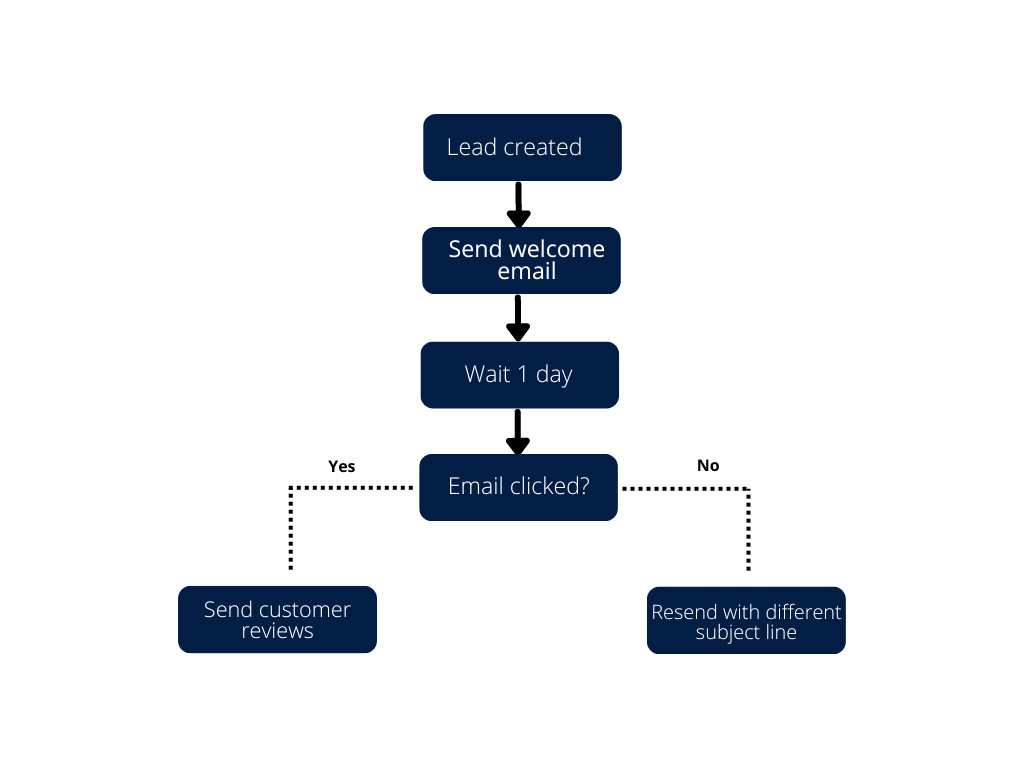Drip Campaigns: The Best Lead Generation Strategies

Imagine: you’ve been super busy with crafting a perfect newsletter to send to your prospects. With this newsletter you hope to keep them up-to-date and get some extra sales in the beginning of the new year.
Communicating regularly with the world is a way to generate B2B prospects. Oftentimes this is done by using social media, a newsletter, a blog and drip campaigns.
There’s only one problem: you’re not using drip campaigns. Which means that your prospects will receive that one newsletter of yours together with emails from competitors and other newsletters they signed up for. And let’s not forget those endless social media posts they scroll through each day. It’s hard to get your message through, or even noticeable. And that’s definitely not what you want.
A solution to this is drip campaigns. They help your lead generation process by sending out little pieces of content to increase your conversion, without having to compete for screen time with your competitors that much.
In this blog we will dive deeper into what drip campaigns are, how drip campaigns work, which types of drip campaigns there are and how you can apply this to your own business for a successful B2B lead generation campaign.

What is a drip campaign?
With drip campaigns, you send out information to your prospects in pieces – or drops. These pieces of information are usually sent through an automation tool as a response to an action a prospect has taken. With this system you make sure you turn prospects into customers, by doing something that is called ‘nurturing’.

You send out information in little pieces, usually 1 or 2 emails per month. Still not exactly clear what we mean by this?
An example:
Your marketing team sent out a newsletter to your contacts focussing on new entrepreneurs. The amount of contacts the newsletter was sent to were 3000 prospects. With this campaign, you gained 3,5 times more subscribers. Good for you!
Now you have that many new subscribers you want to do something with that. Many of them fit in your ideal customer profile, so it would be a waste to not follow up on them. How do you activate these prospects and turn them into customers?
A drip campaign of course!
At Leadblocks we love a good chart. So we asked our designers to create a campaign flowchart, so you can visualize with us how this process works.

This is an example of a drip campaign where you created all your messages beforehand to maximise your sales efforts. All messages are based on actions, so your prospects will receive relevant information exactly when they need it. Also, because information comes in little drops, your prospects will see your content more times during the day, week or month. This repeated exposure creates more connection with you and your prospects, and ensures that when they are ready to make a decision you are on top of their minds. And that’s what we want!

Different kinds of drip campaigns
There are many different kinds of drip campaigns. We will share 6 below.
- Informative drips – These drips are showcasing new subscribers what your company’s USP’s are or how the process is of working with you. This also includes keeping customers informed after doing a purchase.
- Educational drips – These are designed to have your prospects follow an educational program. You will teach them how to use your product. For instance: if you sell barbecue’s, you can teach them how to become a true barbecue pro. The chance they will come back for another purchase is big with these drip campaigns.
- Top of mind drips – These drips make sure you will stay in the picture with your prospects. It’s important to do this so they won’t forget about you. When people forget about you or your business, the chance they will look at competitors is higher. A form of these drip campaigns are social media posts.
- Win back drips – You send these drips to prospects or clients who haven’t been in touch with you or your business for a while. With these, you make sure they come back.
- Promotional drips – By sending out promotional emails with discounts and special offers you give prospects a last little push to purchase.
- Connection drips – These drips are usually being sent out through LinkedIn while doing a lead generation campaign. Here, you want to start the conversation with potential customers who probably don’t know about your company yet. This is usually the first personal contact you have with them. From there, you will lead them through your sales funnel.
Why is a drip campaign so important?
Drip campaigns are important because they contribute to the connection you can make with your potential customers. By using drip campaigns, you do this in a clever, subtle way. Instead of bombarding them with one huge newsletter, you send out the same information, just in different emails.
Outreach campaign
One of the best ways to connect with prospects is sending out birthday messages in LinkedIn lead generation campaigns. This also applies to congratulating them with their new job. The start of a good sales conversation is not about asking for 5 seconds of their time (hello cold calls!), but with building a connection. Drip campaigns will also cut drastically in the time you would normally spend on sending out messages. Because this is all automated and planned, you can focus on other important tasks!
Drip campaigns help your lead generation process by sending out little pieces of content to increase your conversion, without having to compete for screen time with your competitors that much.
How to apply drip campaigns in LinkedIn B2B lead generation?
- Use an automation tool. LinkedIn B2B lead generation always uses drip campaigns. This is because you can connect with many people in a short amount of time through LinkedIn. If you would do this all manually, you would need a whole team to do this for you. A solution for this is a planner or automation tool that does the heavy workload for you.
- Design a message flow. Almost each automation tool allows you to personalize your message flow. With this, you decide how many messages you want to send out, when and with which frequency. A benefit from this is that you can always pause the automation flow and take over yourself.
- Find a dedicated sales agent. Despite the automation in drip campaigns, the human aspect remains important within lead generation. According to LinkedIn’s 2024 report, the quality of leads will be more important than quantity in the coming years. It’s about the connection you make with them instead of purchasing bulk leads and hopefully getting lucky with prospects who are actually not fitting in your ideal customer profile. That’s why you have to make sure your messages are human and that you will always have a sales agent available to take over in case necessary.
Conclusion
Drip campaigns come in different shapes, forms and sizes. You can put them in a webshop workflow, an email campaign and to generate leads. Drip campaigns are an important part of lead generation and sales strategies. They make sure the connection you make with prospects is based on mutual interest and trust, instead of spamming them with unwanted messages in the hope they will buy from you.
Drip campaigns contribute to the connection you can make with your ideal customer. Not only will it contribute to a higher conversion rate, it will also avoid the issue of your prospects not seeing your messages because it is buried under your competitors’ emails. And most importantly: it will help you build a genuine connection with your prospects.
Let’s have a look at what we can do for you, together. Plan a demo with Laura right here.
—
Read this blog in Dutch



